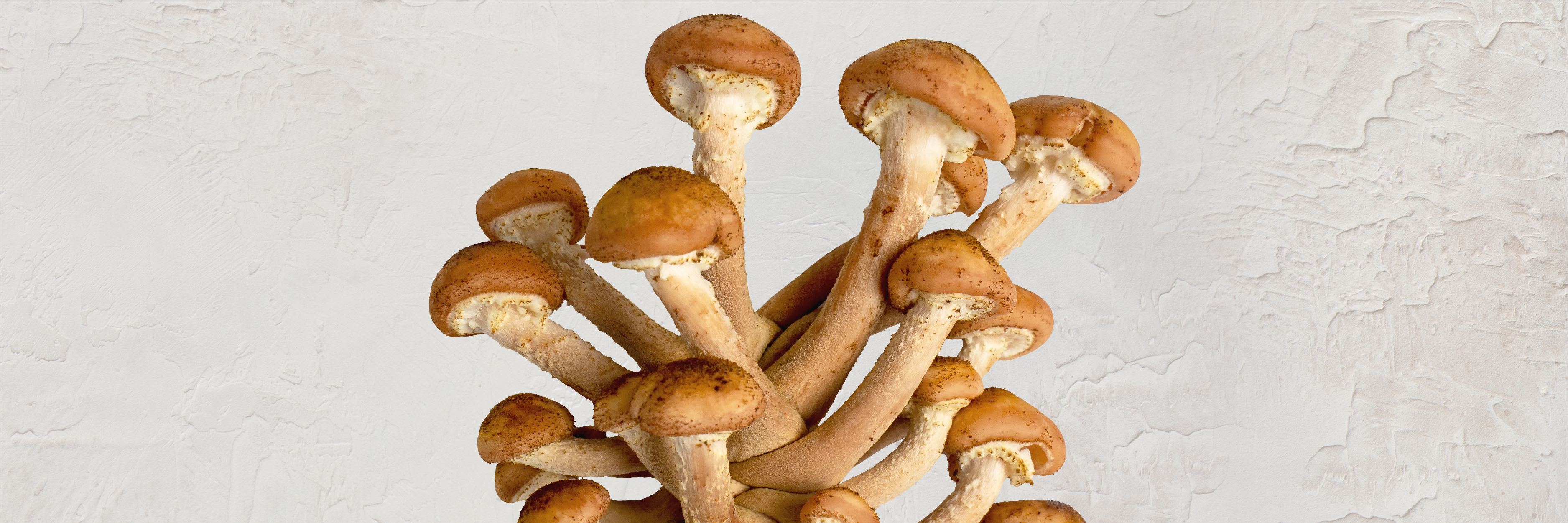


Sign-up for {N}power to get exclusive discounts, newsletters, members-only features, and more!
 Denver - Design District - Alameda and Broadway
Denver - Design District - Alameda and Broadway
368 S Broadway
Denver, CO 80209
United States
 Preferred Store:
Select a Store
Preferred Store:
Select a Store

Whether foraged in a dewy forest or in the freshly misted produce section of the grocery store, mushrooms are a delicious and super nutritious addition to any meal. Neither fruit nor vegetable, plant nor animal, mushrooms are in a category all their own. Mushrooms are the fruiting bodies of certain species of fungi, but what we see above ground is just a glimpse—most of their bodies are made up of large networks (mycelium) of thread-like material (hyphae) underground. There are an estimated three million varieties of fungi, of which 350 are known to be edible.1

Once upon a time, living creatures only existed in water. Then, five billion years ago, fungi ate their way through the rocky surface of the Earth, leaving soil in their wake and making life on land possible. Mushrooms are hungry creatures, and their voracious appetites serve an important role in our ecosystems—they are the great decomposers of our planet, eating and breaking down organic matter as they go.2 They can also act like sponges, absorbing environmental pollutants, including pesticides.3 While this makes mushrooms a potential aide in cleaning up our polluted planet, it is concerning when mushrooms are grown conventionally. The USDA found 52 percent of conventionally farmed mushrooms tested contained traces of thiabendazole, a hormone-disrupting fungicide.4 A diet without a splash of fungicide is much better for you and the mushrooms—choose organic!
Mushroom risotto, stuffed portobellos, reishi tea, in all of their umami-rich variations, mushrooms are full of bioavailable nutrients. Studies on button mushrooms, oyster mushrooms, and shiitake, three of the most common edible varieties, have found that they have anti-inflammatory properties, support cognitive function, and boost mental health.5 6 7 Additionally, they contain important nutrients including B vitamins, amino acids, and vitamin D.8 Great news for vegans and vegetarians—mushrooms are the only non-animal based, naturally occurring source of vitamin D. The outer layer of mushrooms contains ergosterol, a precursor to vitamin D2. When exposed to sunlight or UV irradiation lights at any point throughout the processing, cultivated mushrooms produce and retain at least 10 mcg of vitamin D2 per 100 grams of mushrooms.9
Honeybees and other pollinators are the heart of our agricultural systems, but bee populations are being devasted by neonicotinoid sprays and other pesticides, loss of habitat, and diseases.10 Fortunately, famous mycologist Paul Stamets has spent the last couple of decades investigating different ways fungi can support pollinators. He discovered two ways fungi are great allies in honeybee well-bee-ing. One study discovered that instead of using synthetic pesticides to get rid of varroa mites—parasitic mites that attack and feed on honeybees—Metarizium brunneum fungus can be used.11 Another study found that polypore mushrooms have immune-supporting compounds that reduce the occurrence of two major viruses to which bees are susceptible.12 Not only do mushrooms support our wellbeing, they are good for our honeybee friends too!
FUN FACT: The largest living organism on earth is a mushroom! A single honey mushroom’s mycelial network in Oregon extends an estimated 2,200 acres, blooming with mushrooms all around.13



Sign-up for {N}power to get exclusive discounts, newsletters, members-only features, and more!
